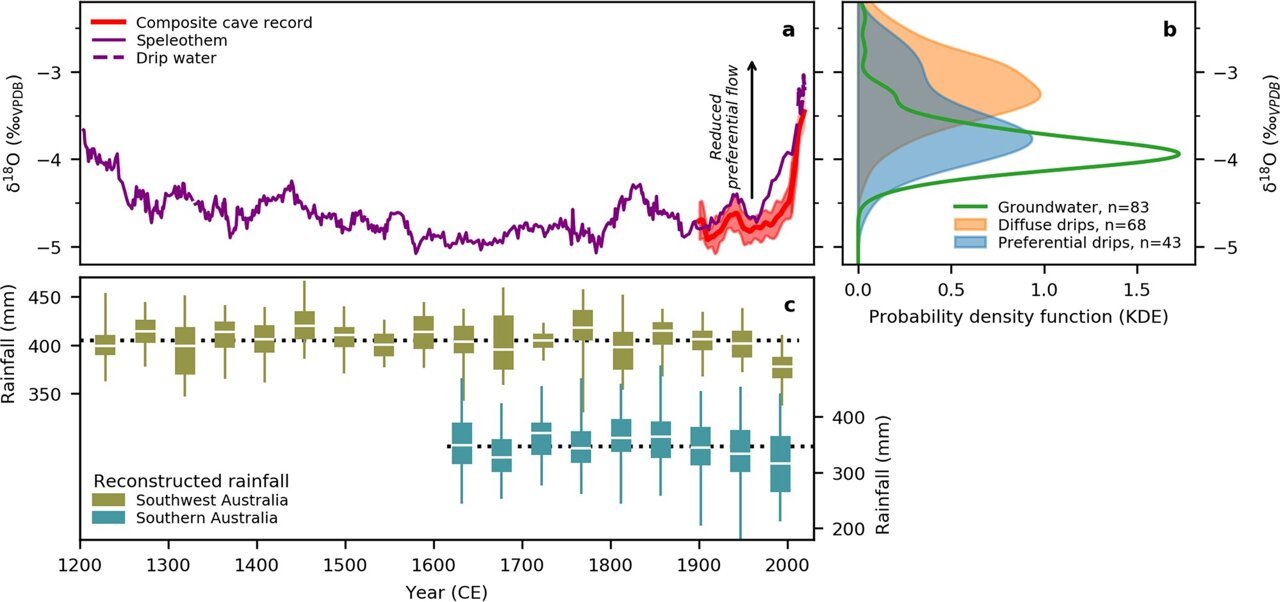Australian environmental scientists have achieved a world-first study using cave stalagmites to track groundwater replenishment. The research, published in Communications Earth & Environment, revealed that rainfall recharge to groundwater in southwest Western Australia is currently at its lowest point in at least 800 years. This decline is attributed to reduced rainfall over the past two decades.
The team collected stalagmites and ceiling dripwater from caves located between the land surface and the groundwater table. These formations provide valuable records of past groundwater replenishment, measured through the oxygen isotopic composition (δ18O). The stalagmites gathered during the study indicated a significant decrease in rainfall recharge to groundwater due to the observed decline in rainfall.
Prof. Andy Baker from the University of New South Wales (UNSW) described the evolving groundwater record compiled through stalagmite data as the study’s most compelling aspect. He emphasized that recent decades have seen unprecedented conditions, and this new approach of utilizing stalagmites as a tool will aid in understanding sustainable groundwater management for the future.
The research was led by Dr. Stacey Priestley from CSIRO, formerly affiliated with ANSTO and the University of Adelaide, along with Dr. Pauline Treble from ANSTO. Dr. Priestley highlighted that analyzing δ18O in stalagmites enables the assessment of long-term changes in rainfall recharge rates. Dr. Treble emphasized the significance of groundwater for meeting 75% of the water demand in the Southwest Australia region, underscoring the resource’s vulnerability.
Although the current record spans 800 years, efforts are underway to extend it further back in time. The researchers aim to reach a timeline of 10,000 years ago to comprehend historical groundwater recharge patterns under various climate scenarios. This expanded understanding will facilitate better management and ensure the sustainability of this vital resource for communities heavily reliant on groundwater.
The investigators employed the X-ray fluorescence microscopy (XFM) beamline at ANSTO’s Australian Synchrotron to map strontium for the CRY-S1 chronology, aiding in their analysis.
The authors express their respect and acknowledge the Wadandi Noongar peoples, the traditional and spiritual custodians of the study region.
Source: Australian Nuclear Science and Technology Organisation (ANSTO)
